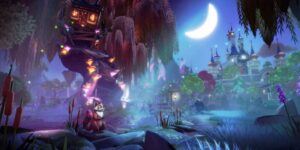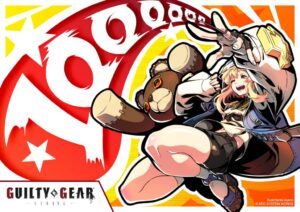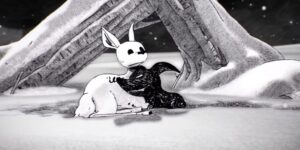No one has quite yet figured out who said “Talent borrows, geniuses steal,” but it seems to be true, especially in the creative world. Tarantino’s work is a pastiche of his favorite childhood films. The Rolling Stones would’ve been nothing without the Delta Blues. Talent borrows.
In the realm of manga, to be a successful artist is no small feat. It takes a certain magical mixture of something + something multiplied by pi and then divided by the gross domestic product (or something). To be an award-winning manga artist then is nothing short of a miracle. Or is it? According to Comic Con, the violent-yet-lovable Chainsaw Man is being considered for the prestigious Eisner award as we speak, which is pretty much the same as an Oscar nomination. In 2021, the same English-translated manga took home three awards for Best Manga and Best Shonen Manga. Curious indeed. What is this phenomenon and how did it do what so many others could only dream of? Geniuses steal.
Written and illustrated by Tatsuki Fujimoto, Chainsaw Man debuted in Japan’s best-selling (and longest-running) manga magazine, Weekly Shonen Jump (shonen meaning “small boy”) in 1998 and continued until 2020. That same year, another manga would surface, but on a periodical not nearly as reputable. Dorohedoro first made ink in the alternative/fringe manga magazine, Monthly Ikki. Its creator was a reclusive artist named Q Hayashima, who is known to wear masks (like her manga characters) during each press event. No shame in your roots, of course.
Any manga/anime/Netflix fan will be able to instantly identify the following A-list offerings displayed on Shonen Jump’s pages. It is notable that based off of a survey, a good chunk of these hits are adored by female fans as well.


In contrast, Monthly Ikki specialize in a particular brand of comics called seine manga (青年漫画). mostly targeted towards adult men, or, y’know, businessmen in their 40s. Nothing even remotely attractive to the teenage girl. Off the bat, these two manga were worlds apart. One already destined for the spotlight and the other in the shadows. And yet, there seems to be something so gosh-darn similar about them. What could it be?
First, both manga will soon have production studio MAPPA as a common denominator. Chainsaw Man is being adapted into a series on Crunchy Roll by the same anime team that brought Dorohedoro to Netflix in 2020. Let’s compare the MAPPA-produced trailers.
Chainsaw Man:
Dorohedoro:
Apart from the apparent gore and MAPPA’s production, there doesn’t seem to be too much overlap. In this case, a closer look is warranted.
HOMMAGE OR PAKURI
On December 14, 2020, news about Chainsaw Man’s anime adaptation went live. Creator Tatsuki Fujimoto took a moment to share a few words of thanks on Twitter, but a certain expression caused quite an uproar. In his own words, “Does the animation production company of Dorohedoro and Jujutsu Kaisen do a Chainsaw man-like Dorohedoro and Jujutsu Kaisen?” That may not seem like much in English, but in Japanese, it’s a loaded phrase. Comment dissected, we find the word “pakuri”.
In Japanese, pakuri (パクリ), is something akin to plagiarism, or something that shamelessly rips-off something else. As manga fans have nothing but love—and time—for deep dives into banal activities (like going through both manga and picking out similarities frame-by-frame), they have done their homework by shedding light on a few direct lifts and some convincing borrowing. Let’s see if these accusations hold water.
DRAWING THE PARALLELS
Ladies and gentlemen, honorable readers, I present to you the incriminating evidence, generously compiled for us today.
Exhibit A: Use of formalwear/white sneakers in fight scenes.


Dorehedoro’s “cleaner”, Shin (heart in Japanese), is almost always seen in his respective suit, black tie and white sneakers while on the job, even when bashing in heads with his trusty hammer. Denji, the eponymous Chainsaw Man, is also constantly in a suit and tie.
Ok, sure. Denji’s part of the Public Safety Division, which may dictate a certain dress code. But white sneakers too? C’mon, man.
Exhibit B: Devil Girls


Dorohedoro’s buxom blue-eyed blond, Nikaido, is not only the sole friend of Caiman, the lizard-man, but is also a Devil herself. Living in the city of Hole, she maintains her human form, but once captured in Hell, her true nature is revealed. Horns, bifurcated tail and red eyes. The works. Chainsaw Man’s egocentric partner, Power, is, aesthetically, just an egotistical blond. However, in her blood fiend devil form, horns sprout from her head and her eyes turn red.
There are a lot of blonds in the world of manga. Off the top of my head though, I can’t recall too many devil-blonds with horns and red eyes.
Exhibit C: Excessive use of doors


To enter/exit the filth of Hole, sorcerers must produce a magical door, which acts as a bridge between both worlds. Throughout the series, these ephemeral doors are constantly materializing and then disappearing into thin air for the benefit and detriment of the main characters. There are a plethora of doors that connect the mortal realm to hell in Chainsaw Man. Not to mention the doors that haunt Denji’s dreams.
When it comes to gateways into hell, you could really go a number of ways—a portal, a hole, a pit, whatever. But something as commonplace as a door? Please.
There are several more points that could be made, but I think we’ve seen enough to make a decision.
BROTHERS IN ART
As it seems to be a case of “no harm, no foul”, let’s just settle this thing out of court. In fact, we can actually call it a win-win. It’s no secret that there are some similarities. Heck, even we think so. However, both manga are incredibly captivating, not just because of the gorgeous illustrations, but also the dynamics between the diverse characters and the worlds these two visionary artists have created.
And maybe we (I, me, myself) shouldn’t be so quick to immediately criticize light plagiarism. After all, the best form of flattery is imitation. And even if that’s really the case with Chainsaw Man, then Dorohedoro should feel very proud of itself.
- amazon prime gaming
- anime
- axie infinity
- Casino Games
- Chainsaw Man
- coingenius
- Dualshokers
- EA Sports
- Evil Geniuses
- Gaming
- gaming headset
- gaming pc
- madden nfl
- Nintendo
- Online casino games
- Originals
- pc games
- plato
- plato ai
- plato data intelligence
- plato game
- plato gaming
- platodata
- platogaming
- playstation
- prime gaming
- Team SoloMid
- xbox
- zephyrnet














